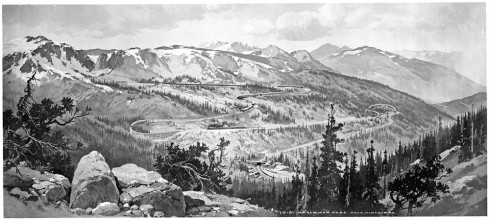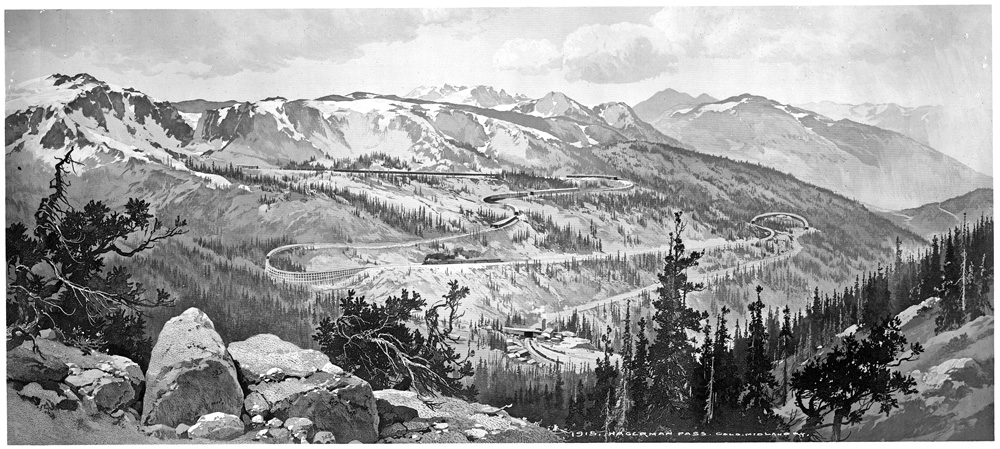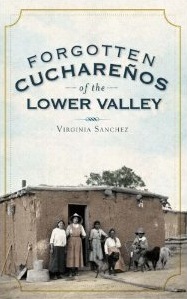By Jan MacKell
Just one of the many great things about living in Colorado are the striking views. Indeed, the state offers amazing mountain vistas quite unlike anywhere else on earth. And, where best to take in awe inspiring views than from a pleasing array of historic mountain passes? The pioneers of yesterday blazed their trails over rough and unforgiving terrain in search of gold, prosperity and new lives. Their efforts have resulted in numerous passes today that range from smooth and easy to challenging and dangerous. Hagerman Pass falls into the category of the former, offering a delightful mountain journey steeped in history.

Hagerman Pass is named for John J. Hagerman, builder of the Colorado Midland Railroad. The pass traverses the Continental Divide along the Sawatch Mountain Range west of Leadville. Here, the headwaters of the Arkansas River connect with the upper valley of the Frying Pan River above Basalt. In the years preceding Hagerman and his famous railroad, the pass was known as Frying Pan and had served as a foot trail between Leadville and the community of Basalt.
Hagerman himself hailed from Michigan and Wisconsin. In one of those places he contracted tuberculosis, high-tailing it to Colorado on his doctor’s advice in 1884. By then he already had at least some of his fortune, and Colorado seemed like the right place to spend it. Using his forthright business knowledge, Hagerman invested in mines around Leadville and Aspen and soon had even more money. Before long he was building the Colorado Midland Railroad, intended to be the biggest and best in Colorado.
With a peak elevation of 11,925 feet, the old Frying Pan Pass proved quite challenging when Hagerman decided to extend the Colorado Midland Railroad tracks over it in 1887. Ultimately the high-mountain trail proved impossible for railroad construction, so Hagerman decided to construct a tunnel underneath it instead. Many of the immigrants Hagerman hired to build the tunnel were Italians who settled at Douglass City, a shanty settlement that is still accessible along the Hagerman Hiking Trail. The town once hosted eight saloons, a dance hall and, allegedly, a post office – all clustered together on one main street.
For a time, Douglass City gained a reputation as being one of the rowdiest new towns in Colorado. There were no schools, churches, police or firemen. But there was a lot of wine and other libations. Soiled doves who were too jaded to work down in Leadville made their way to Douglass City, and shoot-outs and knife fights were common. According to author Marshall Sprague, the community met its end when the tunnel’s dynamite powder house blew up by accident.
On the other end of the Hagerman Tunnel was Ivanhoe, an even more uncomfortable town in which to live. The small camp was named for nearby Lake Ivanhoe, so-named by a Scotsman who thought it resembled Loch Ivanhoe in Scotland. Ivanhoe’s post office was established on April 26, 1888 and ran until June 13, 1894 as a postal and passenger station along the railroad. By then there were several cabins and railroad buildings there, but not much else in the way of accommodations.
Paying his laborers at Douglass City and Ivanhoe was just a fraction of Hagerman’s expenses. Shipping oak railroad ties from Missouri, bringing materials from Chicago and freighting everything over the rough roads from Leadville cost plenty. Also, Colorado’s tough winters didn’t help. When finished, the tunnel ran 2,151 feet from its beginnings over to Lake Ivanhoe and was soon heralded as the highest railroad tunnel in the world. It had also cost roughly $80,000 per mile to build, making it the most expensive road built to date. Construction on the railroad included two trestles, one of which spanned 1,100 feet and was 84 feet high. When complete, however, the new addition was the first standard-gauge railroad to traverse the Colorado Rocky Mountains.
In spite of the initial accolades, Hagerman Tunnel’s fame was short-lived. The Busk-Ivanhoe Tunnel had replaced it by 1893. This latter tunnel began construction in 1891. Admittedly, there were some advantages over the Hagerman: the Busk-Ivanhoe was lower in elevation, and thirteen snowsheds would help the trains travel through during heavy winters. A tiny working community, known as Busk, had established a post office in December of 1890 in anticipation of building the tunnel. But such an undertaking proved costly.
During construction of the tunnel, several workers who likely lived at Busk died. Among them were John Carlson, killed by falling rock in April of 1891 and Morris Donahue and George Hoffman, killed by an explosion in May. A man named Moore Allen was considered fatally injured in another accident later that month. When yet another man was crushed by falling rock in February of 1892, newspapers began calling the Busk-Ivanhoe Tunnel “the greatest life destroyer in the state.” Even more accidental deaths were reported through 1893, when the tunnel neared completion. During one ill-timed explosion in April, five men were killed at once.
The post office at Busk closed in 1894, shortly after the tunnel was completed. Hagerman had by then turned his attentions to Cripple Creek, where he had made several investments. His Isabella Gold Mine was coming under fire in the wake of Cripple Creek’s first labor wars, and Hagerman was called upon to represent other mine owners during negotiations. Soon the Santa Fe Railroad had become involved in the operations on Hagerman Pass. Promoters of the railroad were glad to announce that the new tunnel cut a full ten miles off of the trip to Salt Lake City, Utah – only a slight gain considering how many lives were lost building it.
Then in February of 1896, residents at Ivanhoe were witness to a train wreck. On the way from Leadville to Basalt, a train struck a rock in the track during a wild blizzard and the engine overturned. Engineer John Mead was crushed to death under the engine and the train was forced to return to Leadville until the tracks could be cleared. Despite the tragedy, an assessment of the company in June of 1896 valued the railroad at $6,000 per mile.
In 1897 the Midland took over operations of the Busk-Ivanhoe. Again, it was an expensive endeavor. At a cost of $1.25 million, questions were raised over repayment options on the loans needed to build the tunnel. For a time the old Hagerman Tunnel was brought back into use until negotiations could be settled. And in 1899, severe snows stopped traffic over the pass altogether from January 27 until late April.
By then Hagerman, whose investments in his Cripple Creek mines, property throughout Teller and El Paso Counties, and even business dabblings New Mexico had brought him even more wealth, had sold almost all of his business interests to his son, Percy. John Hagerman died in Italy in 1909. Despite troubles with ownership and the expenses involved, the Colorado Midland continued chugging from Leadville to Basalt for a few more years. Ivanhoe’s post office reopened again in July of 1899 and lasted until 1912. Then it opened a third time in 1913, this time lasting until 1918 when the railroad was abandoned.
When the Colorado Midland Railroad abandoned its tracks over Hagerman Pass, Cripple Creek millionaire Albert E. Carlton stepped in. Carlton’s wealth first came from freighting and later from his many mine investments, and he had long ago become president of Cripple Creek’s First National Bank. The capitalist purchased the failed Colorado Midland shortly after it closed, took up the rails along Hagerman Pass and converted the rail bed into a wagon road at a cost of $25,000.
The road was next designated an official state automobile route and the Busk-Ivanhoe Tunnel was renamed the Carlton (spelled Carleton) in about 1924. The road ultimately fell into disuse when easier roads were built over the Continental Divide. In 1943 the tunnel was closed for good, but the old trail over Hagerman Pass had been sufficiently widened for continued access from Leadville to Basalt.
Today, Hagerman Pass is still highly accessible from Turquoise Lake near Leadville. The road follows the former Colorado Midland tracks as far as Hagerman Tunnel before veering off. Hikers can also still access the original railroad bed. Skinner Hut and Betty Bear Hut, built as part of the 10th Mountain Division Trail System, are available for use in both summer and winter. In Colorado Springs, the 1885 Hagerman Mansion on Cascade Avenue has been an apartment house since 1927, but is still exemplary of the grandiose projects Hagerman so struggled to achieve.
Jan MacKell also masquerades as Jan Collins, Director of the Cripple Creek District Museum in Cripple Creek. She lives in Victor with her husband, a spoiled little dog and two nasty cats.



